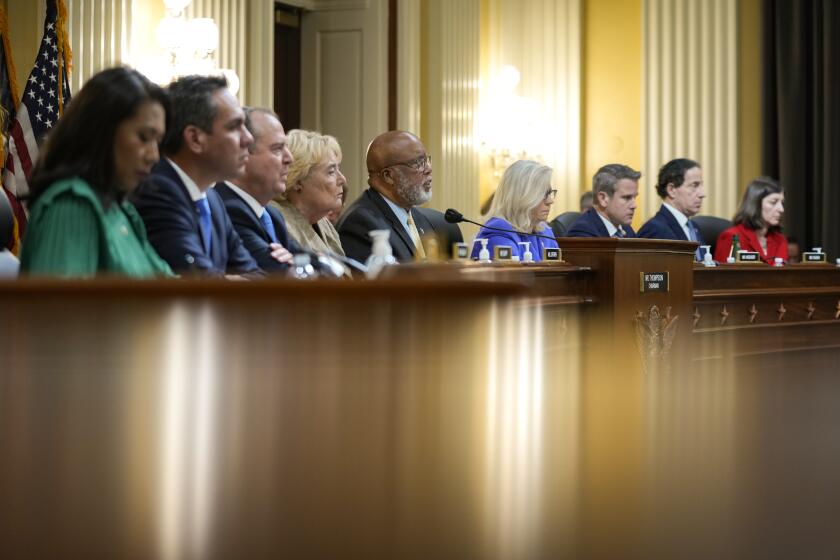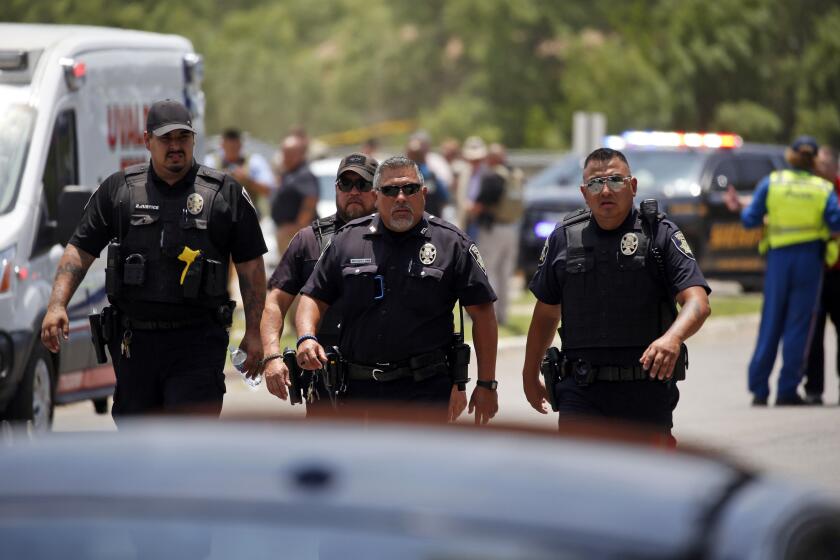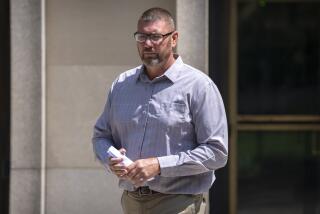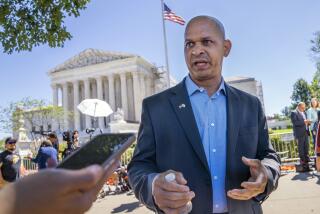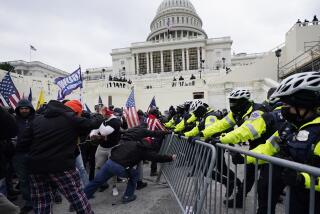Editorial: Good cop, bad cop? Jan. 6 hearings remind us it’s more complicated
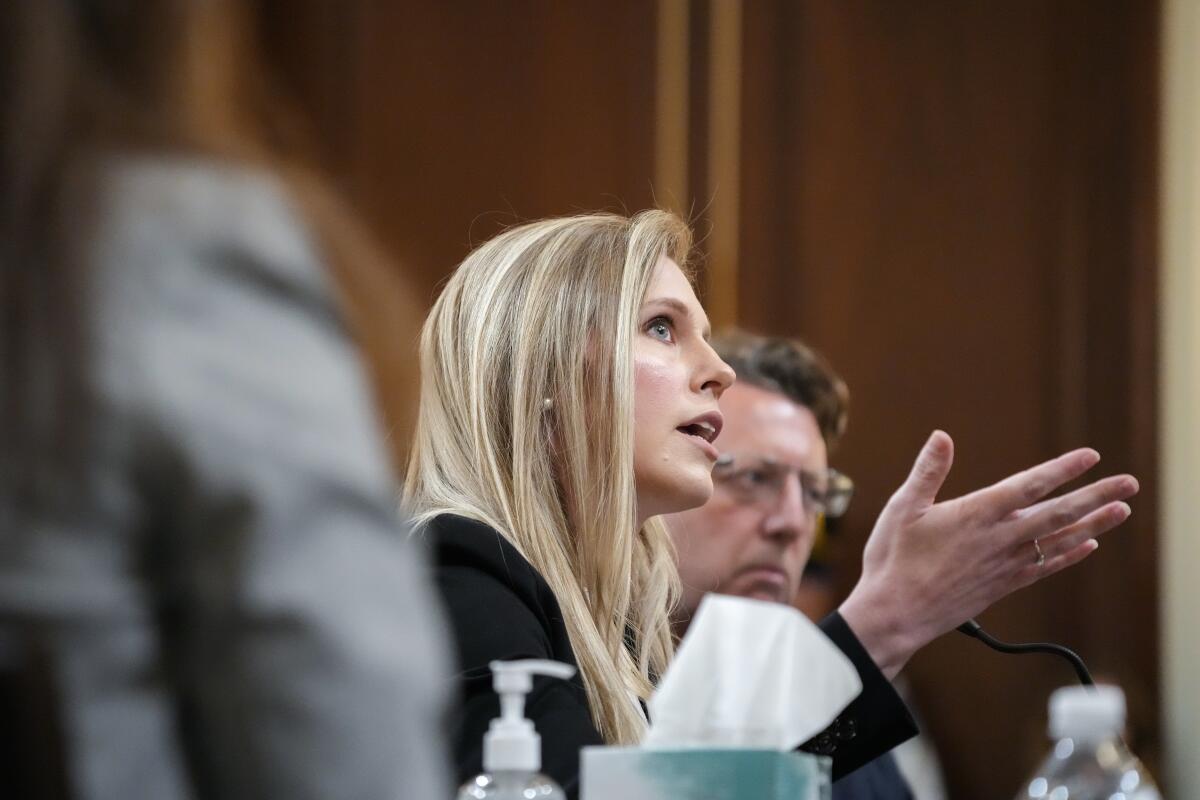
“Never in my wildest dreams did I think that, as a police officer … I would find myself in the middle of a battle,” Capitol Police Officer Caroline Edwards said Thursday at the first public hearing of the House select committee investigating the Jan. 6, 2021, attack on the Capitol. “I’m trained to detain a couple of subjects … but I’m not combat-trained. And that day, it was just hours of hand-to-hand combat.”
The hearings continue this week, but Edwards’ testimony still resonates. Her words, together with video previously unseen by the public, drive home the violent reality of that day. The Capitol was under assault by a mob intent on blocking Congress from certifying the results of the 2020 presidential election, interrupting the orderly transition of power and, in effect, breaking American democracy.
There was nothing to stop the violent horde but Edwards and a few hundred other Capitol police and District of Columbia Metropolitan police officers. But instead of retreating to safety, they did their best to prevent the rioters from entering the Capitol building, and they did it long enough for members of Congress to escape. They stood in what was — yes, we’ll say it — a thin blue line, protecting the law, the Capitol and the nation.
The hearing, taking place in prime time after over 10 months of closed-door investigations, marks the committee’s initial report to the American public and places responsibility for the attack on then-President Trump.
Thin blue line is the term long used by law enforcement officers to describe themselves as the tough but narrow layer that divides good from evil, order from chaos, right from wrong.
The term has always had a certain measure of “us versus them” — cops on one side, and on the other a public that could never understand or respect just what sacrifices police made on its behalf. And in more recent years, it has sometimes been used as an excuse for police tactics that too often result in injury or death, sometimes of criminals, sometimes of innocents.
The “thin blue line” flag, a modification of the Stars and Stripes, has been adopted by right-wing political movements, including by some extremists who feel threatened by liberal politics and policies and by an America that embraces every race and ethnicity. At least one such flag was seen during the Jan. 6 attack, alongside the Confederate battle flag, a “Three-Percenters” flag and other symbols purporting to represent the nation and, simultaneously, its overthrow.
It’s important to remember that in the summer of 2020, there were thousands of police officers who were doing exactly what Edwards and her fellow officers later did at the Capitol — protecting the law and the government from those who would undermine them. Yet there were cases in which officers also used unnecessary and excessive force.
There is a serious concern about the inroads that right-wing sentiments have made into law enforcement, adding considerable fuel to the call to abolish police, at least as the institution currently exists.
Americans enter into a bargain with their police: Officers will run toward gunfire instead of away, and the rest of us will cede to them enormous discretion, abundant resources and the benefit of the doubt. The Uvalde shooting tells us that the bargain needs to be restruck.
Some complain of a war on cops. But actually the nation is in the midst of a struggle to ensure that the police work for us, for our safety, for our liberty and for democracy, rather than against all those things. In video of Jan. 6, we see the enemies of democracy using the blue line flag, supposedly a symbol of law and order, and turning it against freedom; and we see heroic officers such as Caroline Edwards, engaging in hand-to-hand combat for hours, to protect the Capitol and the democratically elected lawmakers inside. Because that’s what they swore to do.
“The police officers who held the line that day honored their oaths,” committee Chairman Bennie Thompson, a Mississippi Democrat, said Thursday. “Many came out of that day bloodied and broken. They still bear those wounds, visible and invisible. They did their duty.”
They are as much a part of the story of policing in the United States as cruel killers such as Derek Chauvin. Even as we demand, correctly, more rigid standards of police performance and accountability, we should not forget the brave public service carried out by Edwards and others like her.
More to Read
A cure for the common opinion
Get thought-provoking perspectives with our weekly newsletter.
You may occasionally receive promotional content from the Los Angeles Times.
